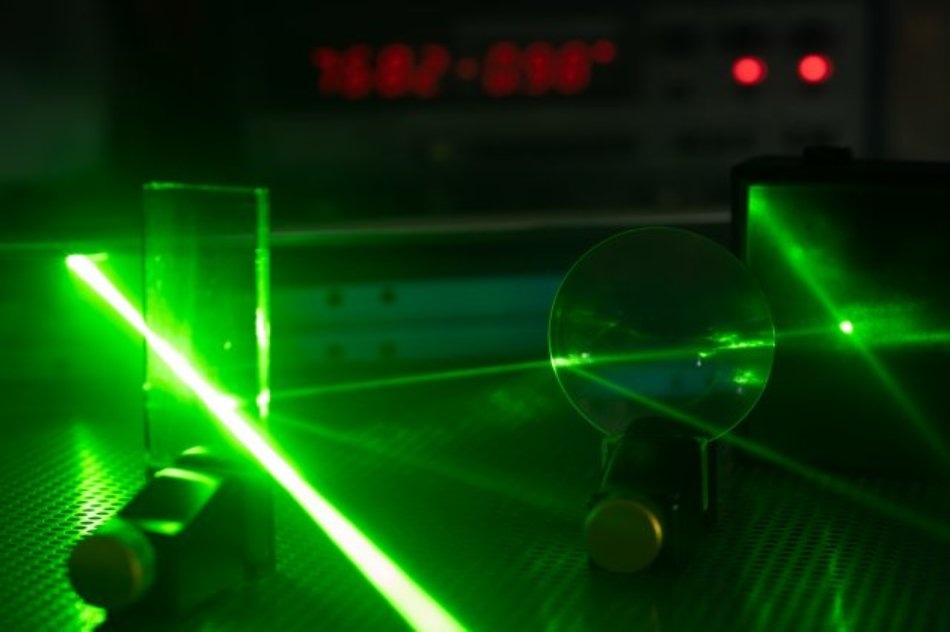Nov 2 2018
A pristine quantum light source with the capability to ensure more secure communications and optimized sensing capabilities for Soldiers has been developed by scientists from the U.S. Army Research Laboratory and the Joint Quantum Institute.
 A green laser on optical table in a quantum optics laboratory is an example of how scientists use light to potentially lead to futuristic secure communications. (Image credit: Shutterstock)
A green laser on optical table in a quantum optics laboratory is an example of how scientists use light to potentially lead to futuristic secure communications. (Image credit: Shutterstock)
Dr Elizabeth Goldschmidt from ARL and Dr Sunil Mittal and Professor Mohammad Hafezi from JQI have described the study in a paper titled “A topological source of quantum light” published in the Nature journal.
Photons, the smallest known particles of light, come in handy for carrying quantum information, which can be applied for encryption to prevent interception from adversaries and for improved sensitivity to the environment.
The scientists stated that one significant part of the challenge is that the photons should stay undisturbed and similar to the maximum possible extent to enable Soldier systems and secure communications to operate at the optimum quality.
The researchers have successfully created a silicon chip that guides light around the edge of the device, where it is shielded from disruptions.
“Quantum sources, such as the one demonstrated in our research, are an enabling technology for integrated photonics-based scalable quantum networks and quantum information systems that require indistinguishable photons,” stated Goldschmidt.
In this experiment, the scientists used silicon to transform infrared laser light into pairs of different-colored single photons.
“We injected light into a chip containing an array of minuscule silicon loops, and the light circulates around each loop thousands of times before moving on to a neighboring loop,” stated Goldschmidt.
Goldschmidt added that the problem with the long journey taken by the light, although essential to isolate several pairs of single photons out of the silicon chip, is that small differences and flaws in the material affect photon quality.
“This is a problem for quantum information applications, as researchers need photons to be truly identical,” stated Goldschmidt.
In order to overcome this challenge, the researchers rearranged the loops such that the light can travel undisturbed around the edge of the chip, protecting the light from disruptions.
“This so-called topological protection uses the geometry of the system, rather than the local material properties, to guide the light,” stated Goldschmidt. “The relatively new field of topological photonics has focused to date on classical, rather than quantum, light fields and this work takes a step forward by demonstrating generation of quantum light in the topologically protected mode.”
An additional advantage of the developed silicon chip is that it operated at room temperature, in contrast to other quantum light sources that have to be cooled down, thereby considerably simplifying the process as a whole.
According to Goldschmidt, this study opens the door for a new research chapter for her, and is one that she anticipates will include similar collaborative opportunities.
“My research interests span many aspects of quantum optics, and this work has allowed me to learn more about the emerging field of topological photonics,” stated Goldschmidt. “I hope that this paper acts as a foundation for future work at the intersection of quantum optics and topological photonics and I am looking forward to continuing to collaborate with Professor Hafezi.”
With regard to the future efforts to transform this study into reality, the researchers have plans to enhance this source with the help of waveguides with minimal undesirable absorption and will continue to analyze the quantum properties of their topological photonic system.